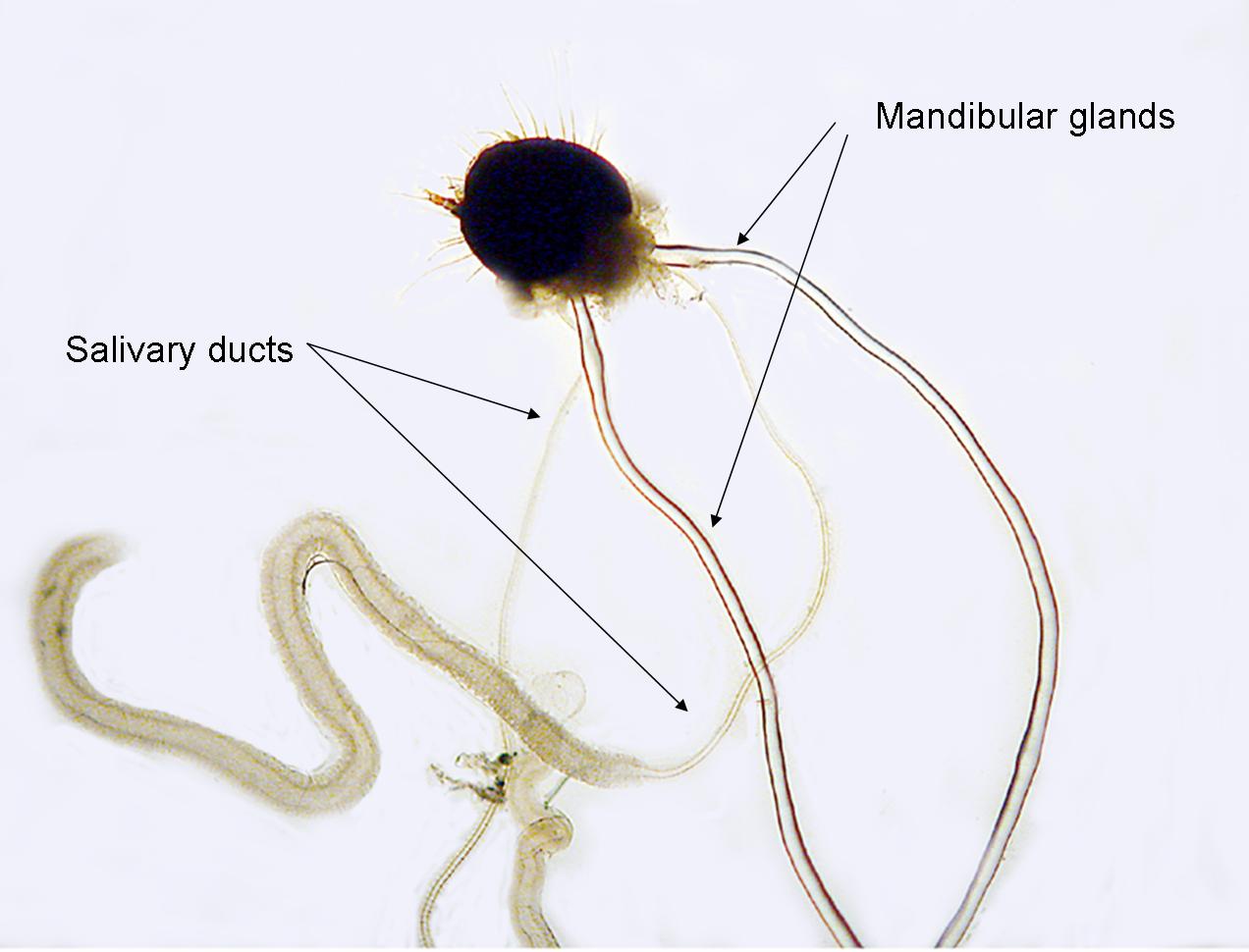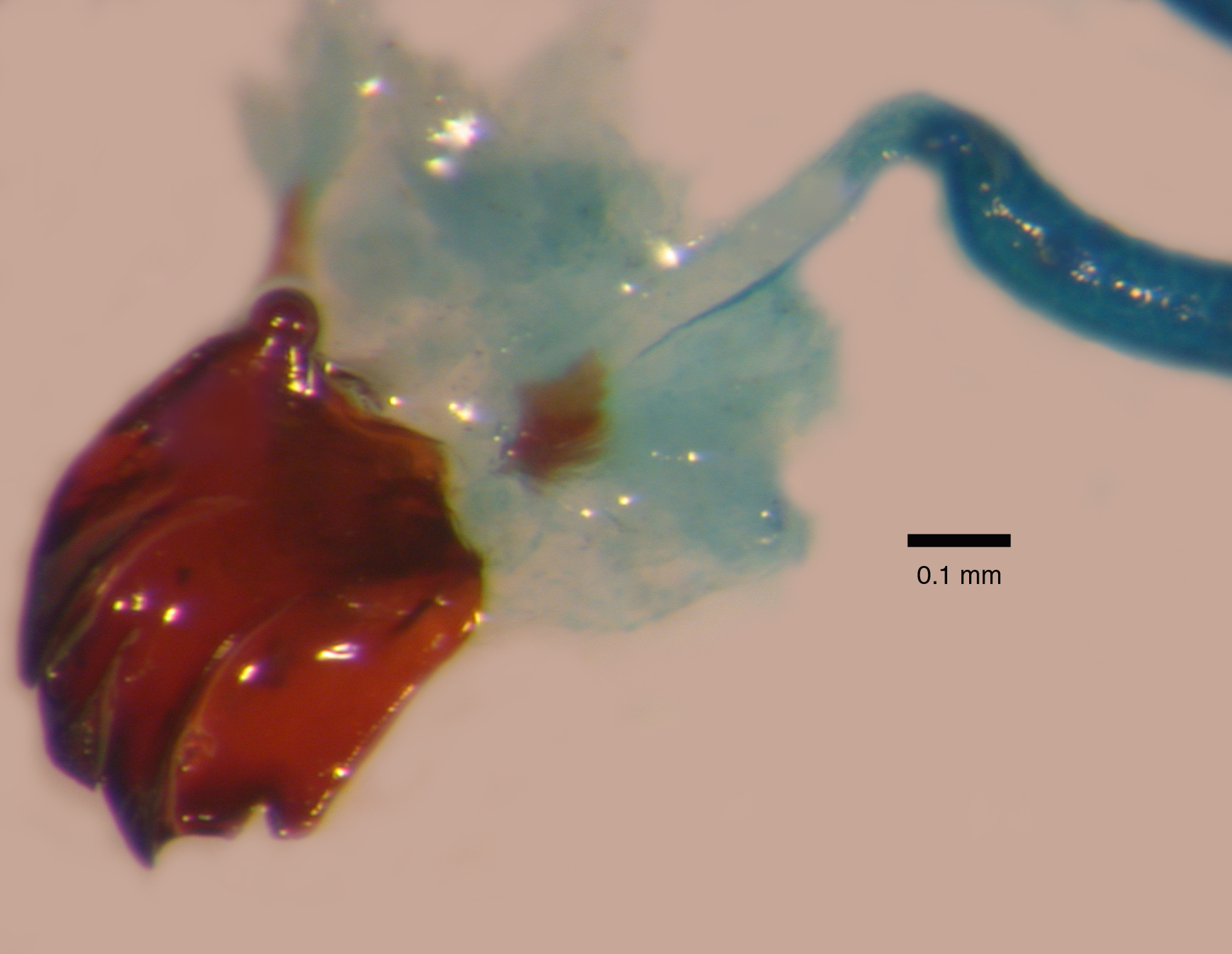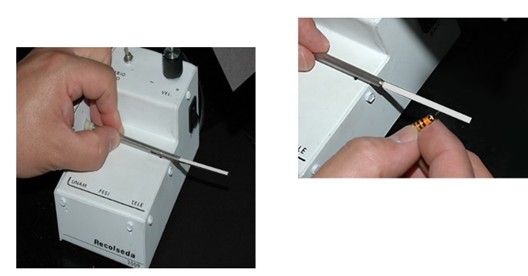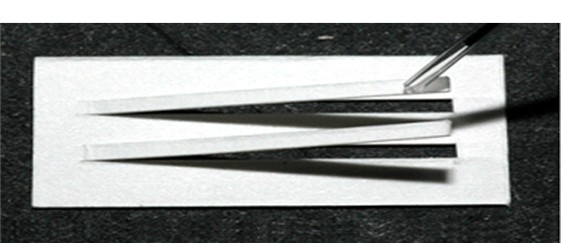Trail marking with the mandibular gland pheromone
The mandibular glands extend the length of the caterpillar's body and their anterior ends are inserted into the apodemes of the mandibles' muscles (middle). The chemical contents of the glands are secreted to the outside through openings at the base of each of the mandibles, often as droplets on the silk strands (left).
Dozens of chemicals occur in the mandibular glands. The two above have been shown to be particularly effective in eliciting trail following.
(Left) Cactoblastis caterpillars following pheromone trails laid down on paper cards. Pencil dots show the location of the pheromone trail.
Although the caterpillars cover their pathways with silk, the material does not elict trail following. The Y-choice bioassays to the far right compare the responses of caterpillars to strips of paper that have silk wound onto them (see above) to strips marked with only the mandibular gland secretion. The latter strips were cut from long strips that caterpillars with spinnerets blocked (to prevent them from spinning silk) were allowed to climb (immediate right). In the bioassays, the caterpillars followed the strips marked with the mandibular gland secretion (tapered ends) over those marked with silk only.
Parallel-pathways bioassay. (Above) Two different candidate pheromones, both isolated from the caterpillars' mandibular glands, are pipetted onto separate pathways on a paper card. In the bioassay (Right) the upper pathway is clearly preferred by the first instar caterpillars.
(Above) When a cladode is sprayed with mandibular gland extract the newly emerged caterpillars scatter independently over the surface (time lapse video).








